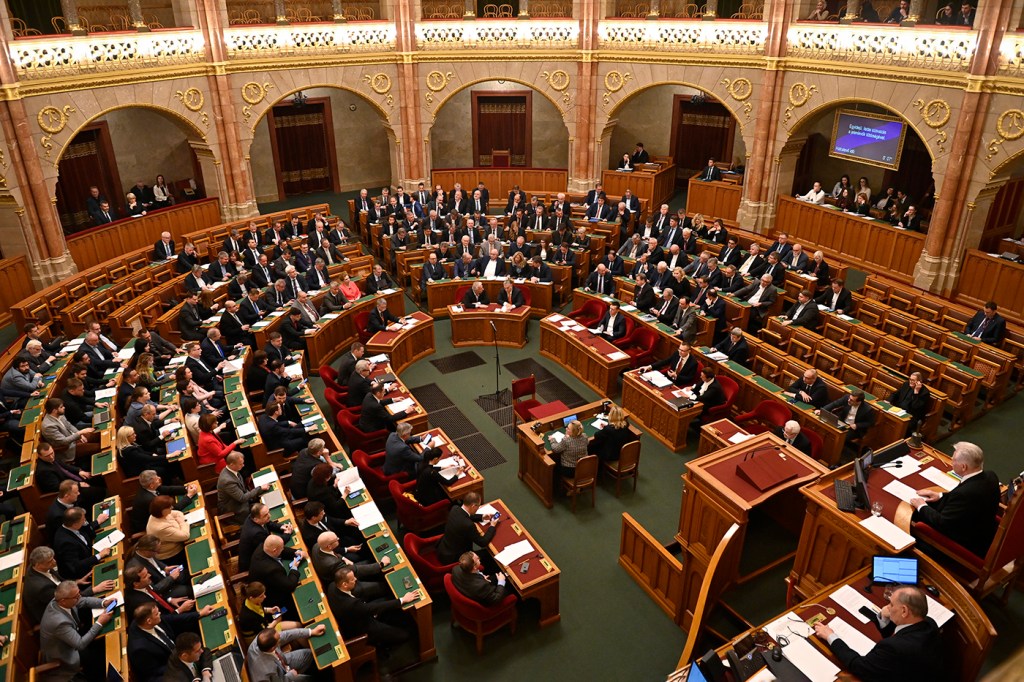As Finland prepares to join NATO, defense forces have become more ‘visible’ inside its borders

Russian President Vladimir Putin’s invasion of Ukraine sent shock waves throughout Europe when it got underway more than a year ago. Forced to reckon with a new geopolitical reality, Sweden and Finland declared that they are pursuing NATO membership—a move that reflects the two countries’ desire for greater security in the face of the Russian threat.
And, as Finland passes through a final hurdle to NATO membership, the Nordic nation has been undergoing changes internally to prepare for a future of “strategic collaboration,” says Mai’a Cross, dean’s professor of political science, international affairs and diplomacy, and director of Northeastern’s Center for International and World Cultures.
What does that change look like on the ground? Recently, the Finnish Ministry of Defense has ramped up training in anticipation of joining the transatlantic military alliance. That training—meant to promote “cohesion” with the broader community of nations—has in recently expanded to the country’s defense forces, Cross says.
“The climate there on the ground—the changes that are underway strategically as the Finnish military rethinks how it’s going to approach European security and its contribution” is palpable, Cross says.
Cross spent three days in Finland with a team of scholars as part of a multiyear effort to explore European strategic culture. Set to conclude in 2026, the project is the result of grant funding awarded to Finnish security and defense experts to assess Finland’s military and defense capabilities amid “significant security developments” on the European continent.
“It’s incredibly well-timed because when they applied for it, they didn’t know that Russia was about to invade Ukraine,” Cross says. “The security landscape is now changing dramatically.”

A northern European nation with a population of roughly 5.5 million, Finland shares the largest border with Russia of any European Union country. In the months following Russia’s invasion of Ukraine, Finland sought to build a border fence to wall itself off from its warring neighbor.
“Zooming in on Finland is particularly interesting at this moment because it’s been historically neutral, and something I was aware of was that Finland, with Sweden, had a very close partnership with NATO all this time,” Cross adds. “And now it’s really moving into ally mode as opposed to just partnership.
“It’s starting to really expand its theater of operation in a sense—instead of just playing a role in northern Europe or the Baltics, it is thinking in more global terms,” Cross adds. “So it’s starting to retool its national defense to have this much broader landscape.”
Indeed, the Finnish defense forces have become more “visible” in Finnish society, Cross says—a consequence of the “high demand” on the part of Finns to talk about the momentous transition that will see off decades of neutrality.
Since declaring its independence from Russia in 1917, Finland has sought to manage its security relationship with Russia by forging diplomatic partnerships with surrounding nations, and, in some instances, relying on aid from abroad.
According to the Woodrow Wilson Center, a Washington, D.C.-based think tank: “In the past, such solutions have been, for example, seeking to form a border state alliance between Finland, Poland and the Baltic countries in the 1930s, relying on German military assistance in the Continuation War in the 1940s, leaning on a policy of neutrality during the Cold War, or deepening defense cooperation with NATO since 2014.”
But it was clear that, faced with Moscow’s recent aggression, standing by while the international community cooperated to check Russia’s influence became untenable. Since the invasion, the Nordic country has cracked down on Russian intelligence operations within its borders, expelling scores of military spies and denying visas to travelers looking to cross the border.
Still, Russia’s deep historical ties with Finland are hard to pass over.
“You see this Russian influence in the architecture and the statues. It has this history of being overtaken by Russia, and then the Soviet Union,” Cross says. “As a result, one of the things I learned on the ground is that the Finns have deep knowledge of Russian society and Russian language.”
Cross suggests that Finnish society’s familiarity with the ways it has been impacted by Russia could translate into strategic insight for NATO.
“As a neutral power, they could be this bridge between Russia and Europe … but with Russia’s invasion of Ukraine, they lost complete trust in Russia,” Cross says. “Nevertheless, Finland has this history with Russia that can serve as a wealth of knowledge that they contribute as they join forces with countries that are trying to combat Russian aggression.”
Turkey approved Finland’s NATO membership bid on Thursday, meaning Finland is officially a member of the international alliance.
Tanner Stening is a Northeastern Global News reporter. Email him at t.stening@northeastern.edu. Follow him on Twitter @tstening90.






